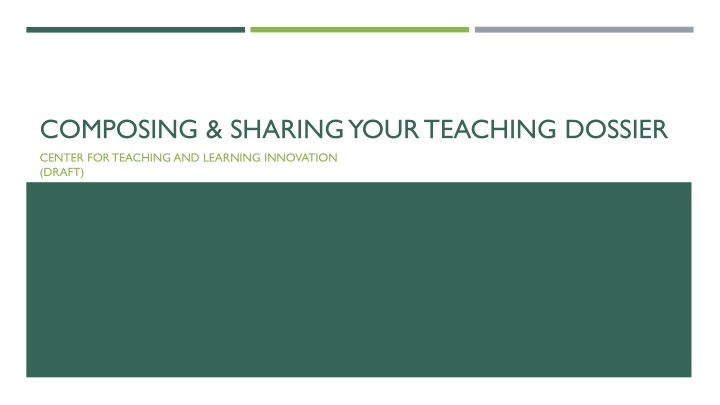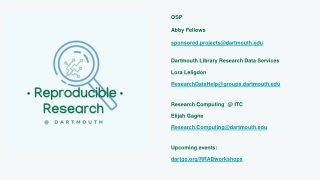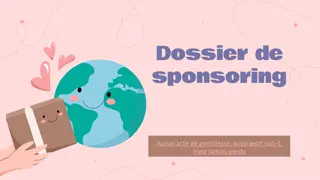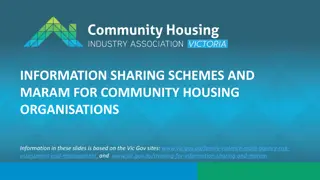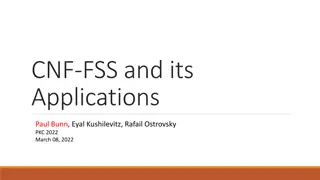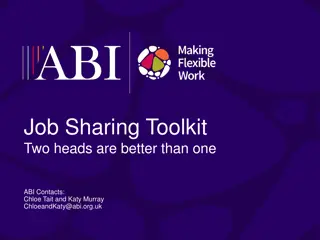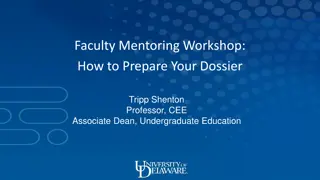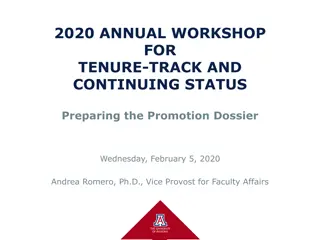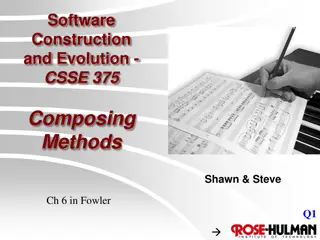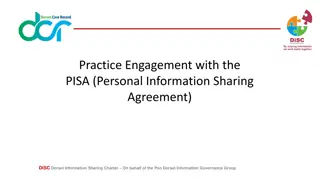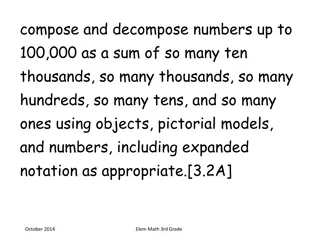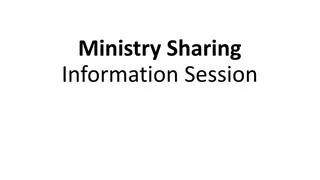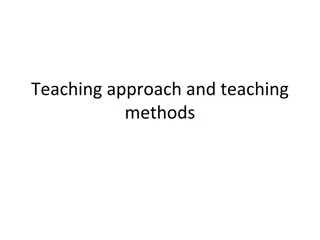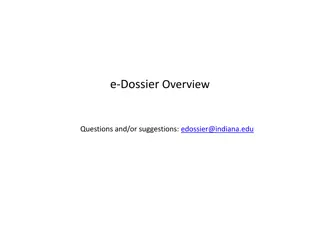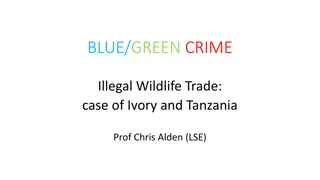Composing & Sharing Your Teaching Dossier - Center for Teaching and Learning Innovation
Enhance your teaching dossier with this guide on purpose, components, building, maintaining, and sharing. Explore examples and strategies to strengthen your teaching portfolio.
Download Presentation

Please find below an Image/Link to download the presentation.
The content on the website is provided AS IS for your information and personal use only. It may not be sold, licensed, or shared on other websites without obtaining consent from the author.If you encounter any issues during the download, it is possible that the publisher has removed the file from their server.
You are allowed to download the files provided on this website for personal or commercial use, subject to the condition that they are used lawfully. All files are the property of their respective owners.
The content on the website is provided AS IS for your information and personal use only. It may not be sold, licensed, or shared on other websites without obtaining consent from the author.
E N D
Presentation Transcript
COMPOSING & SHARING YOUR TEACHING DOSSIER CENTER FOR TEACHING AND LEARNING INNOVATION (DRAFT)
OBJECTIVES By the end of this session, you will: - - - - - - Be able to describe the purpose of composing a teaching dossier. Be able to identify the core components of a well constructed teaching dossier. Construct an outline of your teaching dossier. Decide what resources and artifacts you will include in your dossier. Decide what tools you will use to build and share your dossier. Reflect on how you wish to maintain and build your dossier for future use.
OUTLINE OF MODULE Purpose Components of a Teaching Dossier Building a Teaching Dossier Rationale and use Core elements and optional additions Sharing and maintaining
PURPOSE - - - - - - Highlights personal values and perspectives on teaching. Provides a context to personal philosophy of instruction. Provides evidence of experience and effectiveness. Highlights ongoing professional development and commitment to improvement. Displays contributions to scholarly work. Offers personal reflections.
ELEMENTS OF A TEACHING DOSSIER Biographical Statement Brief History of how you ended up in your current position. Your current responsibilities Describe the courses you have taught most recently Describe the courses you d like to teach or develop To get started, you may want to begin with addressing the following: When did your teaching begin? What brought / drew you to teaching? What are your goals for teaching? - - -
ELEMENTS OF A TEACHING DOSSIER Approach to Teaching / Teaching Philosophy - - Personal beliefs about teaching and learning. Evidence to support your claims about teaching and learning: - Anecdotal evidence and personal experiences - Discipline-specific strategies you employ Summarize your plans and goals as an educator Write this in the 1st person. Statements should be somewhat brief (i.e. within 2 pages) A teaching philosophy statement is a systematic and critical rationale that focuses on the important components defining effective teaching and learning in a particular discipline and/or institutional context - - - Sch nwetter et al, 2002 Schonwetter, D.J., Sokal, L., Friesen, M., and K.L. Taylor (2002) Teaching philosophies reconsidered: a conceptual model for the development and evaluation of teaching philosophy statements. The International Journal for Academic Development. 7:83-97.
ELEMENTS OF A TEACHING DOSSIER Teaching Methods & Examples - A description of the teaching methods you employ. Don t simply state that you use a particular method (i.e. lecture). You should provide a rationale: [Example]: My instructional method of choice is the didactic lecture. I believe that for my discipline direct instruction is the most effective approach, and lecture is the most efficient method to achieve the learning outcomes for my course . - You may include descriptions of activities and assignments you use in your class.
ELEMENTS OF A TEACHING DOSSIER Teaching Responsibilities & Activities - Courses taught: - Brief description of the course: Modality, level, class size, credit hours, etc. Role in course development and delivery Materials developed (i.e. online modules, videos, study guides, lab manuals, etc.) Any additional teaching (non-credit) - Seminars & workshops - Sessions for community interest groups You may attach the syllabi for courses that you have developed or taught - - - -
ELEMENTS OF A TEACHING DOSSIER Professional Development & SoTL Activities Professional Development Sessions & Training Scholarship of Teaching and Learning (SoTL) These are activities where you were a participant, not the facilitator or author of the opportunity. These are activities related to the practice of teaching and learning you have researched. These would include, but are not limited to innovations in technology, strategies, assessments, and design: - In-house opportunities (i.e. CTLI, IT, Department, College sessions) Discipline or society opportunities (i.e. FASEB, AAA, AERA, etc.) - - - - - Faculty Development Presentations & workshops Conference Posters & Presentations Papers & Publications Participation & Collaboration
ELEMENTS OF A TEACHING DOSSIER Reviews & Feedback - or general feedback. - Course evaluation data if it is public and anonymized. - Peer feedback and comments from peer dialogue activities (with permission) - Awards and recognition (i.e. iteach.msu.edu Thank an Educator ) Consider sharing (anonymized) feedback from students in the form of emails, posts in discussion forums
ELEMENTS OF A TEACHING DOSSIER Summary & Reflections Keeping notes on your teaching is a good professional practice. It allows you to reflect and review your efforts and experiences for future opportunities. Consider the practice of reflecting on your instruction as your chance to present your perspective on a course. Students have this opportunity in the course evaluation process, similarly you should also look at that experience and comment on things that worked well, and things that would be done differently the next time. Your summary should be a brief reflection on your experiences. You may also outline goals that you hope to accomplish in your teaching practice.
ELEMENTS OF A TEACHING DOSSIER Appendices / Evidence One of the most profound differences between a dossier / portfolio and a Curriculum Vitae (CV) is that you can showcase and provide artifacts to demonstrate your work. In this portion of your dossier you may consider adding: - Examples of learning activities - Module examples - Learning materials that you have developed - Assessments
SHARING YOUR DOSSIER Creating a resource to share Making the right decision Options and examples Things to consider
CREATING YOUR DOSSIER Using your MSU NetID you have access to various tools and resources that you may consider using in the development of your dossier. Two options you may consider: D2L Google Sites
D2L - EPORTFOLIO You may be familiar with the ePortfolio option within D2L, or you may have seen the tab and wondered what it was for (see below). Note: The D2L ePortfolio is available to anyone with a NetID who can log into D2L. This doesn t mean it is the best or most user-friendly option. It is being presented here because it is a tool everyone at MSU should have access to.
D2L - EPORTFOLIO Building an ePorfolio in D2L is counter intuitive to other tools, like Google Sites. To construct an ePortfolio in D2L, you must first add the artifacts (i.e. examples, documents, reflections) to D2L (See image below) To add artifacts and items to your ePortfolio: - - - Go to My Items Select Add Select the type of item you wish to add
D2L - EPORTFOLIO Once you have your items added to D2L, you can compose your ePortfolio. The ePortfolio in D2L is shared by creating a Presentation . Select the New Presentation tab and fill in the information for your presentation (see image to left). You can add pages and select different layouts for your ePortfolio.
D2L - EPORTFOLIO When you have composed your ePortfolio, you can share it with people for review and feedback. Look for the title of your presentation within the ePortfolio section of D2L. Select the down arrow and click on the Share tab. You can set the window of access for people to review your ePortfolio. There is a URL that you can share with people to access your presentation
GOOGLE SITES Log into your Google account (MSU email address will work) Go to Google Drive (or go to https://sites.google.com) Select the New button Search for Google Sites Note Google sites is a public facing website. People with the URL can access this site. The benefit of using D2L is that you have more control over who can view and access your portfolio and the content contained within. The interface for Google Sites is more intuitive than ePortfolio. You can: Select more themes for your resource. Add elements as you build Link to resources within your Google Drive Use Google analytics to monitor visits to your page
CONSIDERATIONS - There are some factors to consider before you start building or composing your dossier (online): hard time linking to D2L from Google Sites - Privacy & access Who and when? - Portability Can I take this with me? - Ease of developing a resource - Monitoring visitors (Use of Google Analytics) - Linking to content and materials You can link to Google resources within the D2L ePortfolio. You may have a
CONSIDERATION CHECKLIST Feature D2L Google Cost (Free) Portability (Take with you) Privacy (Control) Ease of Use (Build) * Analytics Design Elements * With Google Analytics
EXAMPLES & RESOURCES Here are some sample portfolios by MSU graduate students. You can refer to these as an example of what is possible technically: Samples: - https://grad.msu.edu/sample-portfolios How to: - https://youtu.be/0woNTtlcxgM - Shameless self-promotion example: https://sites.google.com/view/jayloftus-portfolio/home?authuser=0
